Central African Economic Community (CEMAC)

Customs Union, Central African Economic and Monetary Community (CEMAC) Cameroon, Congo, Chad
- Introduction to the Central African Economic and Monetary Community (CEMAC)
- Organizational and Institutional Framework of the CEMAC
- History of the Central African Economic and Monetary Community
- Economic Profile of the CEMAC region: Cameroon, Central African Republic,
Chad, Equatorial Guinea, Gabon, and the Republic of the Congo
- Recent economic developments, medium-term Outlook, and risks
- CEMAC Regional Economic Programme (PER) 2009-2025
- Central African Economic Union (UEAC)
- Central African Monetary Union (UMAC)
- Customs Union of the CEMAC
- Other institutions of the CEMAC
- Community Parliament
- Court of Justice
- CEMAC Specialized Agencies;
- Bank of Central African States (BEAC)
- Development Bank of Central African States (BDEAC)
- Main transit corridors of the CEMAC ZONE
- New community transit regime of the CEMAC
- The Central African Economic and Monetary Community in practice
- Investment regimes in the CEMAC region
- External Relations of the CEMAC (the EU, the U.S.)
- Customs of the Central African Economic and Monetary Community
The objectives of the subject “Central African Economic and Monetary Community (CEMAC)” are the following:
- To understand the objectives of the CEMAC
- To evaluate the benefits for the member countries as well as the areas of cooperation of the CEMAC
- To analyze the economic and the trade integration process among the Central African Economic and Monetary Community (CEMAC) member countries
- To learn about the customs procedures of the Economic and Monetary Union and the CEMAC Sydonia system
- To know the regional economic programme of the Central African Economic and Monetary Community (creation of an integrated economic space in 2025)
- To analyze the role of the CEMAC member institutions: BEAC and BDEAC
Contents available in French (optional contents):
- Reform of the payment system in the CEMAC countries
- Automated System for Large Amounts
- Teleclearing system in Central Africa
- Economic Commission on Cattle, Meat and Fish Resources
- International Commission of the Congo-Oubangui-Sangha Basin
- Economic projections by country
- Customs of the Central African Economic and Monetary Community
- Customs Tariff of the CEMAC member countries
- Customs Procedures
- Models of statements
- Custom system: Sydonia

The Subject “Central African Economic and Monetary Community (CEMAC)” belongs to the following Online Programs taught by EENI Global Business School:
Master in Business in Africa, Transport in Africa, International Business.
Doctorate in African Business, World Trade.
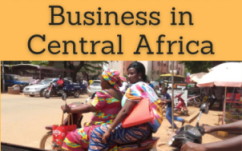

EENI Partnerships with Educational Institutions
Languages:  or
or  Communauté Économique et Monétaire de l’Afrique centrale (CEMAC)
Communauté Économique et Monétaire de l’Afrique centrale (CEMAC)  Comunidad Económica y Monetaria de África Central (CEMAC)
Comunidad Económica y Monetaria de África Central (CEMAC)  Comunidade Económica e Monetária da África Central (CEMAC).
Comunidade Económica e Monetária da África Central (CEMAC).
Credits of the Subject “Central African Economic and Monetary Community (CEMAC)”: 1 
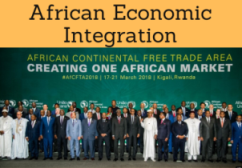
Masters adapted to  Cameroonian Students.
Cameroonian Students.
The monetary integration in the region of the CEMAC is fully effective, although there are some obstacles to the free movement of people, goods, and services.
Sample - Central African Economic and Monetary Community (CEMAC)
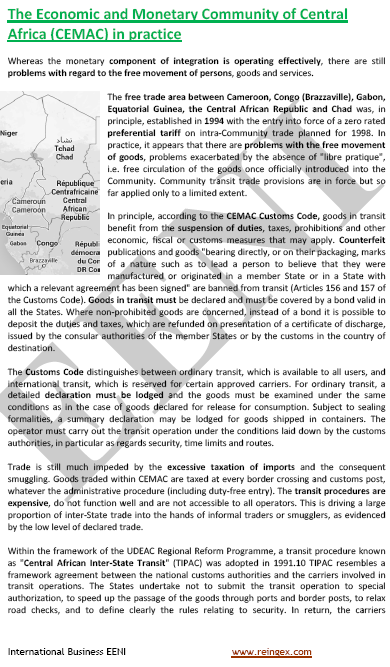
The Economic and Monetary Community of the Central African States (CEMAC) includes six Central African Countries: Cameroon, Central African Republic, Chad, Equatorial Guinea, Gabon, and the Republic of the Congo.
The main objective of the CEMAC is to promote the harmonious development of the Member States in the context of the establishment of a true CEMAC Common Market (free movement of persons, goods, capitals, and services) by establishing an economic and monetary union.
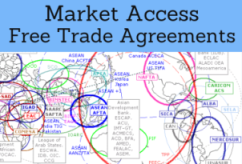
The Central African Economic and Monetary Community (CEMAC):
- Population of the CEMAC Region: 44 million people
- Area: 3 million km²
- Average growth of their economies: 4% annually
- Cameroon provides almost 29% of the regional GDP
- The Second-largest tropical forest zone in the World (Congo Basin)
- Main resources: petrol, gas, minerals, gold, manganese, diamonds, and uranium
- All the CEMAC countries belong to the Western CFA Zone
The Central African Economic and Monetary Community (CEMAC) belongs to the Central African Economic Area.
The Bank of Central African States (BEAC) is an African international institution governed by the Convention establishing the Monetary Union of Central Africa (UMAC), the Monetary Cooperation Convention concluded between France and the six Member States of the UMAC: Republic of Cameroon, the Central African Republic, the Republic of the Congo, the Republic of Gabon, the Republic of Equatorial Guinea, and the Republic of Chad.
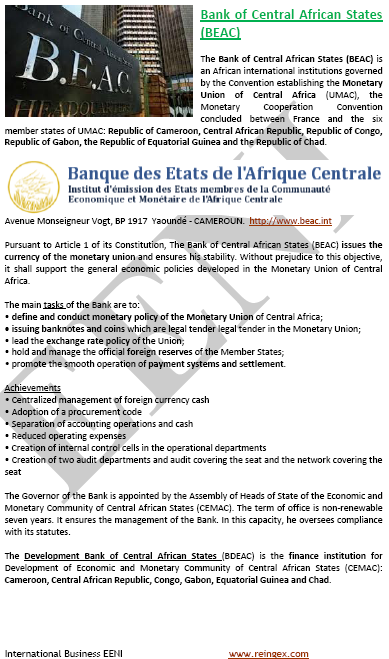
The Development Bank of Central African States (BDEAC) is the finance institution for the development of the Economic and Monetary Community of the Central African States (CEMAC): Cameroon, the Central African Republic, Congo, Gabon, Equatorial Guinea, and Chad.
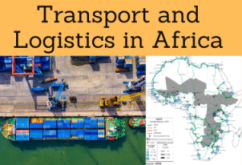
The largest ports in the CEMAC region:
The main transit corridors of the CEMAC ZONE:
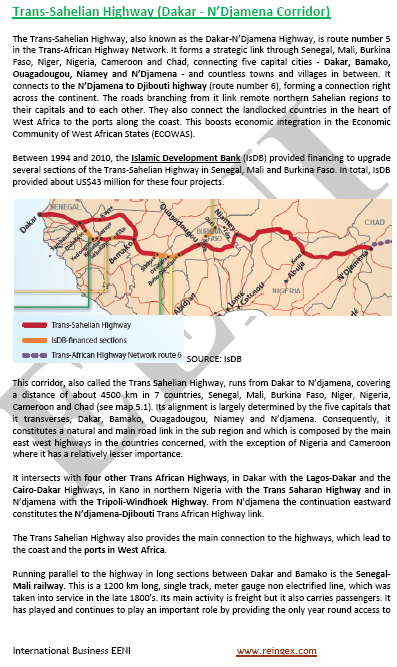
See also: Economic Community of Central African States.
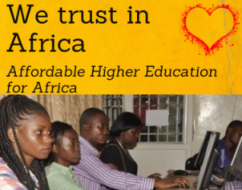
(c) EENI Global Business School (1995-2024)
We do not use cookies
Top of this page



